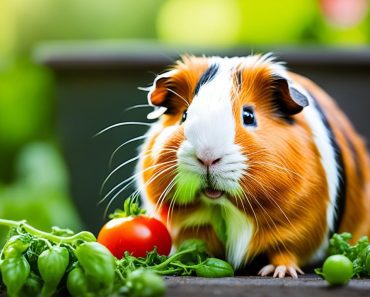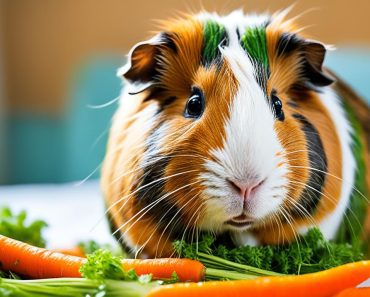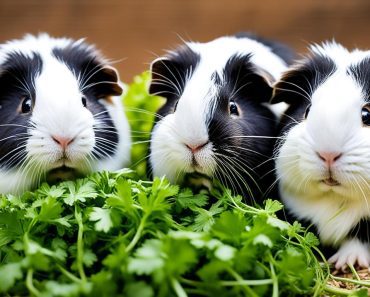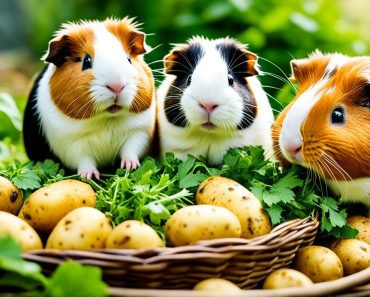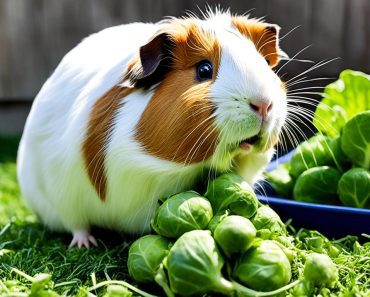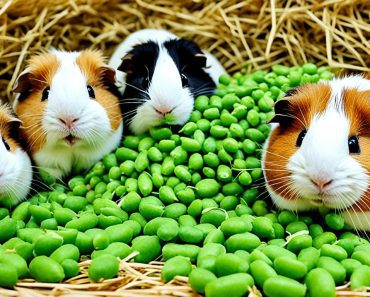Hello, fellow guinea pig owners! Today, I want to talk about a fruit that often finds its way into our kitchens – plums. As responsible pet parents, we always want to give our furry friends the best, so it’s natural to wonder if guinea pigs can enjoy this juicy and delicious fruit.
The good news is that plums are indeed safe for guinea pigs to eat, but like any treat, they should be given in moderation. Before we dive into the details, let’s explore why plums can be a delightful addition to your guinea pig’s diet.
Can Guinea Pigs Eat Plums? Yes, in limited amounts.
- Plums are safe for guinea pigs to eat, but only in moderation
- Remove the pits or stones as they can pose a choking hazard
- Feed about an eighth of a plum with the skin on for maximum nutritional benefits
- Plums should only be given as a treat once or twice a week
- Remember, the majority of your guinea pig’s diet should consist of grass or hay
Guinea Pig Diet and Fruit Feeding
As herbivores, guinea pigs have unique dietary needs. Their diet should primarily consist of grass or hay, which should make up about 80% of their daily food intake. The remaining 20% can include a variety of fruits and vegetables to provide essential vitamins, minerals, and other nutrients. When it comes to incorporating plums into a guinea pig’s diet, it’s important to do so in moderation and with careful consideration.
Why is grass or hay the cornerstone of a guinea pig’s diet?
Grass and hay are essential sources of fiber for guinea pigs. They help maintain healthy digestion and prevent common gastrointestinal problems that these small pets can encounter. The long, fibrous strands of grass and hay are critical for their dental health as well, as they aid in wearing down their continuously growing teeth.
Can guinea pigs eat plums?
Yes, guinea pigs can enjoy plums as part of their occasional fruit treat. However, it’s important to note that plums should only make up a small portion of their overall diet. Ideally, plums should comprise no more than around 5% of their total food intake. This ensures that guinea pigs receive the necessary balance of nutrients from their primary sources of grass or hay.
What are the nutritional benefits of plums for guinea pigs?
Plums offer various nutritional benefits for guinea pigs. They contain antioxidants, such as vitamin C and flavonoids, which support overall health and help boost their immune system. Plums also provide potassium, an essential mineral that aids in maintaining proper heart and muscle function. Additionally, the skin of the plum is rich in antioxidants and should be included when feeding plums to guinea pigs.
How should plums be incorporated into a guinea pig’s diet?
When introducing plums to a guinea pig’s diet, it’s important to follow the proper guidelines. Plums should be washed thoroughly to remove any pesticides or residues. The pit or stone should be removed, as it can pose a choking hazard. The plum can then be cut into small, bite-sized pieces for easy consumption. It’s recommended to offer about one-eighth of a plum to a guinea pig and remove any uneaten fruit after approximately 30 minutes to avoid spoilage.
Remember: While plums can be a tasty and nutritious treat for guinea pigs, they should never replace the main components of their diet, such as grass or hay. Plums should always be offered sparingly and alongside a balanced diet to ensure guinea pigs receive the necessary nutrients for their overall well-being.
Are Plums Safe for Guinea Pigs?
When it comes to including plums in a guinea pig’s diet, there is good news – plums are not toxic to guinea pigs and can be safely fed to them. However, there are certain precautions to keep in mind.
The pits or stones of plums should be avoided at all costs. They contain amygdalin, which can turn into cyanide when eaten raw. Cyanide is harmful to guinea pigs and can have serious health consequences. To ensure the safety of your furry friend, it’s essential to remove the pits or stones before offering plums to your guinea pig.
Plums do offer some health benefits to guinea pigs. They are a healthier fruit option compared to others, thanks to their antioxidant properties, high vitamin C content, and the presence of flavonoids and potassium. Not only that, but the skin of the plum is also rich in antioxidants, making it even more beneficial for your guinea pig’s health.
When introducing plums into your guinea pig’s diet, it’s important to do so in moderation. Plums should never make up a significant portion of their diet. Instead, they should be considered a tasty treat and fed sparingly. Aim to include plums in your guinea pig’s diet once or twice a week, alongside their regular hay and grass-based diet.
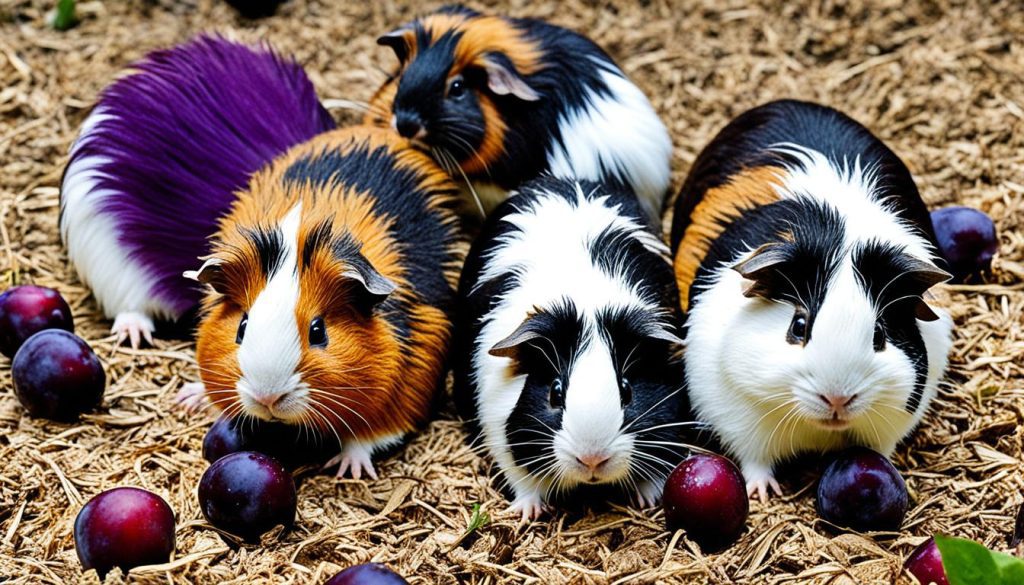
Remember, a balanced and varied diet is crucial for the well-being of your guinea pig. While plums can be a safe and enjoyable addition, they should not replace the main components of their diet. Always prioritize hay and grass as the foundation of their nutrition, and use plums as an occasional supplement.
Potential Risks of Feeding Plums to Guinea Pigs
While plums offer health benefits, there are some potential risks to be aware of when it comes to including them in a guinea pig’s diet. It’s important for guinea pig owners to understand these risks and take necessary precautions to ensure the safety and well-being of their pets.
Thoroughly wash plums to remove pesticides
Before feeding plums to guinea pigs, it’s crucial to wash them thoroughly to remove any pesticides or chemical residues that may be present on the skin. This can be done by rinsing the plums under clean running water and gently rubbing them to remove any dirt or impurities. By taking this simple step, you can minimize the potential exposure of your guinea pig to harmful chemicals and provide them with a safer, healthier treat.
Choose organic plums when possible
To further reduce the risk of pesticide contamination, it’s recommended to choose organically grown plums for your guinea pig. Organic plums are cultivated without the use of synthetic pesticides or fertilizers, making them a safer option for your pet. This way, you can ensure that the plums you feed to your guinea pigs are free from harmful chemicals that could potentially harm their health.
Feed plums in small amounts
Although plums are generally safe for guinea pigs to consume, they should be fed in moderation. Plums contain oxalates, which can contribute to the formation of bladder stones in guinea pigs if consumed excessively. To prevent this, it’s important to limit the amount of plums you offer to your furry friend. A small portion of plum, such as one-eighth of the fruit, is sufficient as a treat without the risk of overconsumption.
“While plums can be a delicious and nutritious addition to a guinea pig’s diet, it’s essential to give them in moderation and take extra care to wash them thoroughly to ensure their safety.”
Choking hazard and cyanide toxicity
The pits or stones of plums pose a significant choking hazard to guinea pigs. Additionally, they contain amygdalin, a compound that can release cyanide when chewed or broken open. To protect your guinea pig from these potential dangers, it’s crucial to always remove the pits or stones before offering plums to them. This simple precaution can prevent choking incidents and keep your furry friend safe.
To summarize, while plums can be included in a guinea pig’s diet as a tasty treat, it’s important to be aware of the potential risks they may pose. By washing plums thoroughly, choosing organic options, feeding in moderation, and removing the pits or stones, you can enjoy the benefits of plums without compromising your guinea pig’s health and well-being.
| Potential Risks of Feeding Plums to Guinea Pigs |
|---|
| Thoroughly wash plums to remove pesticides |
| Choose organic plums when possible |
| Feed plums in small amounts |
| Choking hazard and cyanide toxicity |
Preparing and Feeding Plums to Guinea Pigs
When it comes to including plums in a guinea pig’s diet, proper preparation is essential to ensure their safety and enjoyment. Follow these steps to prepare and feed plums to your furry friend:
- Wash the plums: Before feeding plums to guinea pigs, it’s crucial to wash them thoroughly to remove any pesticides or other contaminants. Use clean water and gently scrub the surface of the fruit to ensure it is clean and safe for consumption.
- Remove the pit or stone: The pit or stone of the plum should be removed before offering it to your guinea pig. This is important because the pit can pose a choking hazard and contains substances that can be harmful to their health.
- Cut the plum into small pieces: Guinea pigs have small mouths, so it’s best to cut the plum into about eight small pieces. This will make it easier for them to chew and digest the fruit without any difficulties.
- Offer a small portion: When feeding plums to guinea pigs, it’s important to remember that it should be given in moderation. Offer your guinea pig one-eighth of a plum at a time to prevent overfeeding and avoid any potential digestive issues.
- Remove any uneaten fruit: Guinea pigs may not eat the entire plum in one sitting. To avoid spoilage and prevent any health risks, remove any uneaten fruit from their enclosure after about half an hour.
Remember, plums should be considered a treat rather than a staple in a guinea pig’s diet. They should be fed sparingly, once or twice a week, to maintain a balanced and nutritious meal plan for your furry companion.
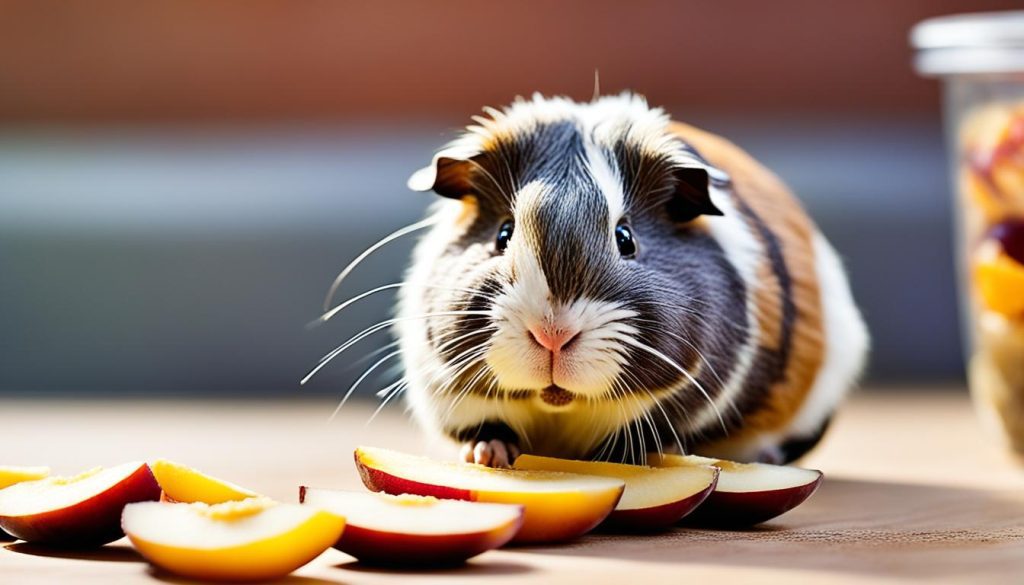
Conclusion
Plums can be a safe and nutritious addition to a guinea pig’s diet. These delicious fruits offer various health benefits, including antioxidants, vitamin C, flavonoids, and potassium. However, it’s crucial to remember that moderation is key when feeding plums to your furry friend.
While plums are generally safe for guinea pigs, there are some risks to be aware of. The pits or stones of plums should always be removed as they can pose a choking hazard and contain amygdalin, which can release cyanide when chewed or broken open. Additionally, the oxalates present in plums can contribute to bladder stones, so it’s important to feed them in small amounts.
Plums should be part of a balanced diet for guinea pigs, with the majority of their intake consisting of grass or hay. Fruits and vegetables, including plums, should be given as occasional treats, making up only a small portion of their overall diet. Always ensure that you wash the plums thoroughly to remove any pesticides before offering them to your furry friend.

